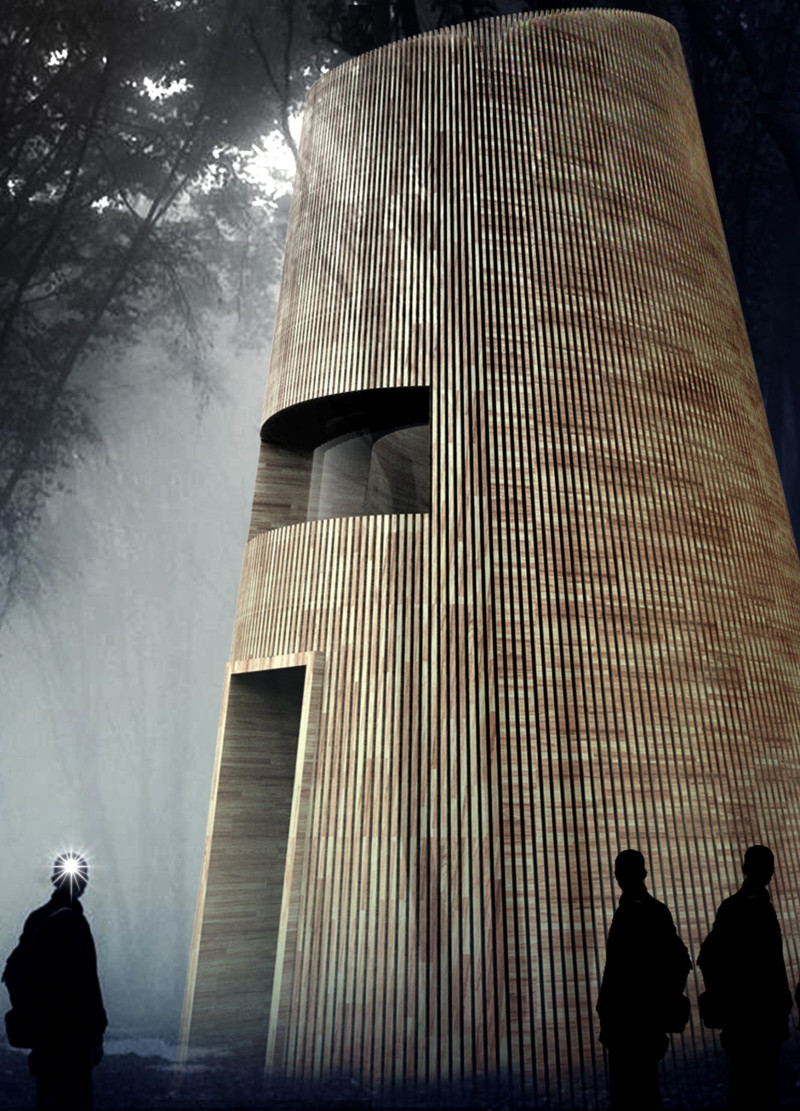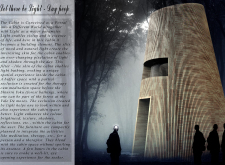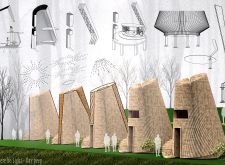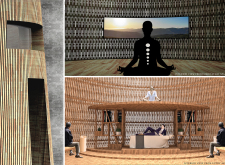5 key facts about this project
The function of this cabin is to serve as a wellness retreat, providing users with a space for meditation and therapeutic reflection. The interior layout is designed to promote tranquility, featuring designated areas that facilitate both communal practice and solitude. Overall, the project effectively balances the need for seclusion with a connection to nature.
Unique Design Approaches in Materiality and Light Interaction
This project stands apart from many others due to its innovative use of vertical wooden slats on the exterior. These slats not only define the cabin's aesthetic but also serve a functional purpose by filtering sunlight, creating an ever-changing pattern of light and shadow within the space. This dynamic interaction allows users to experience different qualities of light throughout the day, enhancing mindfulness and providing varied atmospheres for reflection.
The choice of materials plays a significant role in the project’s success. Sustainable timber is utilized for the wooden slats, aligning the cabin's construction with environmental consciousness. The extensive use of glass offers views of the surrounding landscape while maintaining structural integrity. Solid, compact surfaces within the cabin ensure that any furnishings do not detract from its primary function as a meditation space.
Design and Space Configuration
The architectural design includes a well-considered layout that promotes ease of movement and access to light. Central to the cabin is a meditation area, featuring minimalist furnishings that complement the overall aesthetic. Secondary spaces are strategically designed to allow for individual reflection, while maintaining a visual connection with the exterior.
Architectural sections and plans illustrate the thoughtful arrangement of spaces, ensuring that users can migrate seamlessly between areas dedicated to introspection and those that encourage communal engagement. Through floor plans, the interconnectedness of the spaces is revealed, which optimally uses natural light and encourages various reflective practices.
The “Let There Be Light - Day Peep” cabin serves as an example of how architectural design can create environments that prioritize well-being and interaction with nature. This project emphasizes the importance of materiality and light in fostering a connection between built environments and their natural contexts. Explore the project presentation to gain further insights into its architectural designs, sections, and ideas that contribute to its unique character.

























